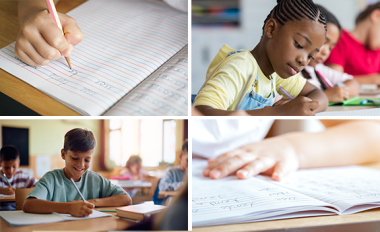“Can you tell me about your picture?” “Can you tell me what your story says?” As a teacher, parent, or classmate, asking questions to an enthusiastic young artist or writer can... read more

At Kendall Hunt Religious Publishing (RPD), we take pride in our extensive experience in creating customized curricula that is tailored to your unique educational needs. When... read more

In today's fast-paced digital world, the art of handwriting is often overshadowed by the convenience of typing. However, the timeless skill of putting pen to paper holds... read more

Project-based learning (PBL) is a research-backed educational method that puts students in the driver’s seat of their own learning. By focusing on student choice, open-ended... read more

For one school, it’s all part of the culture of “surprise and delight.” In Eminence, Kentucky, the cafeteria slide is just one feature of the EDHub, a 30,000-square-foot... read more

Whether you’re a homeschool parent or an educator of a private school, it can be a challenge finding a curriculum that meets both academic and spiritual needs. At Kendall Hunt... read more

